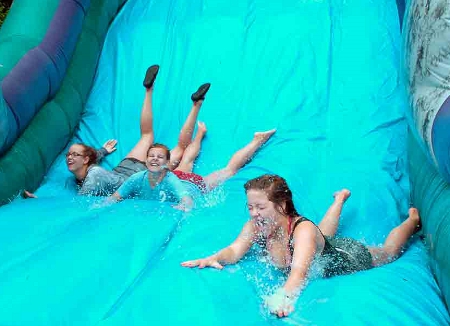Summer Slide: Kids Lose A Month of Learning

Schools across the nation let out for summer this month, and for many students, the break will cost them a month of learning. That is among the findings of a sweeping new study on summer learning by the nonprofit RAND Corporation and the Wallace Foundation.
The study, Making Summer Count: How Summer Programs Can Boost Student Learning, also found that the setbacks add up, particularly for pupils from low-income families, all but guaranteeing a permanent achievement gap. “When you really delve into achievement test score results, you see that it’s the low-income kids who are losing more knowledge and skills around reading during the summer,” Catherine Augustine, co-author of the report, told the Salt Lake Tribune (6/12). “They don’t catch up during the summer, and they lose more ground the next summer. Over time, that loss is cumulative, and it’s really hurting these kids.”
The good news: quality summer programs can help stave off summer slide.
Research has shown that students’ skills and knowledge often deteriorate during the summer months, with low-income students facing the largest losses. The “Making Summer Count” study included an extensive review of the literature on summer learning loss and summer programs as well as data from ongoing summer enrichment programs. It found that instruction during the summer has the potential to stop these losses and propel students toward higher achievement. School districts and private summer program providers can learn from successful programs how to maximize quality, student participation, and strategic partnerships. The study also has recommendations for providers and policymakers about how to reduce barriers, capitalize on a range of funding sources, and demonstrate positive student outcome.
Schools such as Eaglecrest Elementary in Utah’s Alpine School District didn’t wait long before plunging students into a month-long program to boost their reading skills at least up to grade level before they return to school in fall, the Salt Lake Tribune reported. Teacher Jamie Meacham hopes her “super STARS” (Students and Teachers Achieving Reading Success), who were invited to participate because they were not reading at grade level, enter second grade ahead of the pack.
In Utah, the 69 percent of economically disadvantaged students scored “proficient” or better on state language arts exams in 2010 compared with 87 percent of their higher-income peers. There was a similar gap for math and science. Many students in the Salt Lake City region’s Title I schools, which receive federal funds because of the high rate of poverty in their neighborhoods, went back barely a week after school let out for four to six weeks of summer school. Parents typically pay around $10 a week.
The most effective summer programs include individualized instruction, parental involvement, and small class sizes, the RAND study noted. They also may include “enrichment” or fun activities, such as field trips and art projects, that break up academic time and make attending school over the summer break more appealing.
Filed under: K-12 Education News
Tags: achievement gap, Education Policy, Programs for Students, Public Policy, Research on Learning, summer, Summer Programs (Students)








